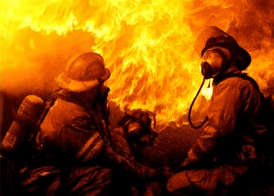 I seem to be getting asked a lot lately about what the first arriving company officer should do at a working structure fire. Specifically, the debate revolves around two basic premise. Should the first arriving company officer assume a fixed command position outside the structure and coordinate the activities of incoming units? Or, should the first arriving company officer assume a “working command” or “mobile command” position and engage in the firefight with their crew? The short answer is… it depends. Let’s explore this issue from the perspective of situational awareness.
I seem to be getting asked a lot lately about what the first arriving company officer should do at a working structure fire. Specifically, the debate revolves around two basic premise. Should the first arriving company officer assume a fixed command position outside the structure and coordinate the activities of incoming units? Or, should the first arriving company officer assume a “working command” or “mobile command” position and engage in the firefight with their crew? The short answer is… it depends. Let’s explore this issue from the perspective of situational awareness.
The Company Officer Role
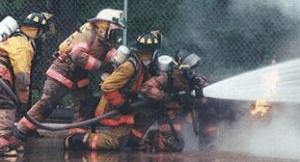 Essentially, the role of the company officer is to be a front line supervisor for their company. Sometimes the officer is the most experienced member of the crew. Sometimes they are not. The company officer’s primary responsibility is to ensure the safety of their crew and to facilitate the coordination of the crew’s activities as part of overall incident strategy.
Essentially, the role of the company officer is to be a front line supervisor for their company. Sometimes the officer is the most experienced member of the crew. Sometimes they are not. The company officer’s primary responsibility is to ensure the safety of their crew and to facilitate the coordination of the crew’s activities as part of overall incident strategy.
Establishing Command
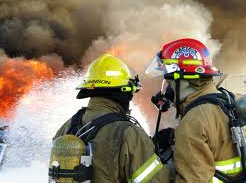 It is vitally important to have someone designated as the person-in-charge at every incident. Preferably this would be explicitly announced so all responders know who is running the show. Even if an incident is minor, it is good practice to establish and announce who is in command. Some responders criticize the practice of establishing command at smaller incidents, calling it overkill and unnecessary. I’m not advocating a formal command structure is necessary at small incidents. I will, however, advocate for PRACTICING the act of establishing command at ALL incidents as a means to develop habits that will pay off when your stress level goes up.
It is vitally important to have someone designated as the person-in-charge at every incident. Preferably this would be explicitly announced so all responders know who is running the show. Even if an incident is minor, it is good practice to establish and announce who is in command. Some responders criticize the practice of establishing command at smaller incidents, calling it overkill and unnecessary. I’m not advocating a formal command structure is necessary at small incidents. I will, however, advocate for PRACTICING the act of establishing command at ALL incidents as a means to develop habits that will pay off when your stress level goes up.
We are creatures of habit and there is no environment where we will behave in ways more consistent with our habits than when we are under stress. Practice becomes the automatic scripted performance under stress. If you develop the habit of establishing command (which is more that simply making a radio announcement), that can become a valuable habit when things become complex.
Working Command
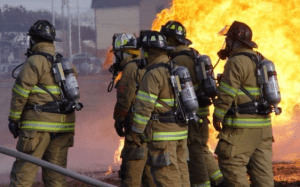 The heart of the issue to be discussed in this article is what the first arriving company officer should do, physically, after establishing command at a working fire. There are, essentially, two options. Operate as working command – sometimes called Mobile Command – or assume a fixed position outside the structure to coordinate the emergency until relieved by someone else.
The heart of the issue to be discussed in this article is what the first arriving company officer should do, physically, after establishing command at a working fire. There are, essentially, two options. Operate as working command – sometimes called Mobile Command – or assume a fixed position outside the structure to coordinate the emergency until relieved by someone else.
There are several good arguments why a company officer might want to establish mobile command. They include:
1. The crew is under staffed and the company officer needs to be part of the crew to get the task done.
2. The crew is under experienced and the company officer needs to be part of the crew to ensure the inexperienced responders will remain safe.
3. The company officer is under trained and/or under experienced in the act of commanding and therefore assumes a role with the company on the interior because that is where he or she is most comfortable.
4. The company officer feels an obligation to be part of the crew and to help with the workload. The company officer might feel guilty if he or she does not participate in the hands-on work that needs done. Further, the company officer might fear being subjected to ridicule by company members for not helping with the workload.
5. The company officer feels the best thing to do is join up with the crew, make an aggressive attack on the fire or an aggressive search for victims. The belief might be there is no time to waste and expedience of task completion is the primary focus and reason for being part of the company.
6. The next arriving officer will be arriving soon and can assume the fixed command position.
There may be a few more, but this puts a good frame around the company officer as mobile commander decision mindset.
The Working Command Challenge
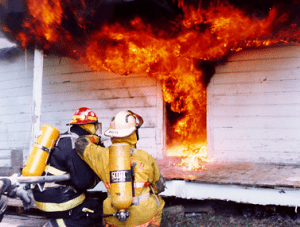 I cannot dispute any of the arguments for why a company officer would assume a working command, or mobile command, position at an incident. It is not for me to judge this decision, especially when there are so many dynamic factors that can influence the decision. However, I can offer perspective on the situational awareness challenges created by working (mobile) command.
I cannot dispute any of the arguments for why a company officer would assume a working command, or mobile command, position at an incident. It is not for me to judge this decision, especially when there are so many dynamic factors that can influence the decision. However, I can offer perspective on the situational awareness challenges created by working (mobile) command.
The premise is a simple one. In order to effectively perform the duties of command, the person in that role must meet three criteria:
1. Be trained in how to perform the duties of command (and it would be nice to have experience to go with the training).
2. Be hands-off (not perform manual tasks while performing the cognitively demanding role of command).
3. Be in a position to see the big picture (physically located back far enough from the scene to be able to see the critical clues and cues).
The Situational Awareness Tie-In
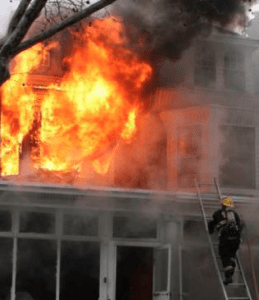 To make this point salient, I want to refresh you on the three levels of situational awareness and then briefly refresh you on three types of situational awarenesses we develop and maintain at emergency scenes.
To make this point salient, I want to refresh you on the three levels of situational awareness and then briefly refresh you on three types of situational awarenesses we develop and maintain at emergency scenes.
Situational awareness is the ability to perceive clues and cues in your environment, comprehend those clues and cues into meaning and to make accurate predictions about future events. Formally, this three-step model is known as Perception, Comprehension and Projection. If you’re a fan of the OODA Loop decision making model, situational awareness is formed in the Observe and Orient part of of the OODA Loop.
As you perceive, comprehend and project, you are actually doing this to form three different types of situational awareness – Personal, Company and Incident. Some of the clues and cues captured and processed to form each situational awareness are the same for all three. Others are not. It is the goal of all responders to develop and maintain all three, regardless of their position on the emergency scene.
Incident situational awareness is the most challenging because it requires forming, and maintaining, an understanding of a dynamically changing, stimulus-rich environment. In the command position there is a lot to make sense of. Lots of verbal information and lots of audible information. To form incident situational awareness, a commander must physically be in a position to see and comprehend dynamically changing visual information and to hear and comprehend audible information. This takes A LOT of cognitive horsepower.
It is important to understand that when a company officer chooses to be hands-on, it will impact incident situational awareness. The company officer may be in a great position to ensure the safety of his or her crew and to help do the heavy physical work. But mobile commanders are not in a position to see, hear and comprehend the dynamically changing incident conditions.
Who’s Flying the Plane?
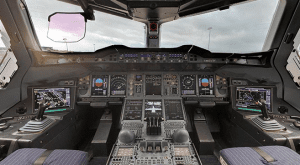 When command is a working command, it means the commander is hands-on, engaged in physical activities. It also means no one is commanding the incident – no one is flying the plane. It would be very unnerving if the next flight you were on the pilot announced they were going to set the auto-pilot, leave the flight deck, and serve you some drinks and snacks. In this seemingly ridiculous analogy no one would be flying the plane. The plane would be flown on auto-pilot.
When command is a working command, it means the commander is hands-on, engaged in physical activities. It also means no one is commanding the incident – no one is flying the plane. It would be very unnerving if the next flight you were on the pilot announced they were going to set the auto-pilot, leave the flight deck, and serve you some drinks and snacks. In this seemingly ridiculous analogy no one would be flying the plane. The plane would be flown on auto-pilot.
A fireground where the incident command is mobile (working) is in the same predicament when the commander is hands-on. The commander is not flying the plane. For whatever reason they choose to apply, they’re not commanding the incident. They’re hands on and they’re not seeing the big picture. And incident situational awareness will suffer.
Chief Gasaway’s Advice
 It is important to review your standards to ensure it addresses the roles and responsibilities of the first arriving officer and under what conditions they should assume a fixed command position or operate as working command. If there is an expectation that company officers serve in a fixed command position it is imperative they be taught how to command (at least the initial minutes of an incident until they would be relieved).
It is important to review your standards to ensure it addresses the roles and responsibilities of the first arriving officer and under what conditions they should assume a fixed command position or operate as working command. If there is an expectation that company officers serve in a fixed command position it is imperative they be taught how to command (at least the initial minutes of an incident until they would be relieved).
I once observed a captain trying to command a large and complex incident until he was relieved. He stood there and didn’t say or do anything. He was numb and he was overwhelmed. I offered to assist him and he simply gave me a blank stare. It was obvious he was suffering from overload and didn’t know how to command the initial moments of the call. Fortunately the relief arrived quickly and the captain was sent off to do a company-level assignment.
When company officers assume working command positions and engage in the firefight it is vitally important they (and everyone else responding to the incident) understand the plane is flying without a pilot for a period of time. The next-in officer should conduct a quick and thorough size-up, independent of the first arriving officer’s assessment to ensure it still makes sense for the first-in company to be on the interior. This involves determining the speed at which the incident is moving and making some calculations about whether the interior crews can outmaneuver the fire and overwhelm it.
If the second-in officer is not comfortable being the commander there is always the possibility he or she will also engage in hands-on activities, leaving the incident without a commander for an even longer period of time. If the practice is to have all companies engage and the first arriving chief officer assumes the command, then everyone must realize the plane flies without a pilot until the chief officer arrives. The risk associated with this and the potential situational awareness consequences should not be taken lightly.
Action Items
 1. Review your Standards to ensure the expectations of first arriving company officers are clearly established.
1. Review your Standards to ensure the expectations of first arriving company officers are clearly established.
2. Ensure company officers are trained (and practice) commanding the initial operational time period at working fires.
3. Discuss how incident situational awareness is to be established and maintained if/when the first arriving officer becomes working command (Hint: The easy-out answer might appear to be assign command to the apparatus operator. Be careful. That person is equally vulnerable to degraded incident situational awareness because of the attentional demands of pumping the apparatus.
___________________________________________________________
The mission of Situational Awareness Matters is simple: Help first responders see the bad things coming… in time to change the outcome.
Safety begins with SA!
___________________________________________________________
Comment on this article in the “Leave a Reply” box below. If you want to send me incident pictures, videos or have an idea you’d like me to research and write about, contact me. I really enjoy getting feedback and supportive messages from fellow first responders. It gives me the energy to work harder for you.
Thanks,
Email: Support@RichGasaway.com
Phone: 612-548-4424
Facebook Page: www.facebook.com/SAMatters
LinkedIn: Rich Gasaway
Twitter: @RichGasaway
YouTube: SAMattersTV
iTunes: SAMatters


The notion is working command is new and worrying to me. As you point out, when a leader is task oriented the big picture gets impacted. Second, what happens to a 360 and the rest of size up with this model. Great articles & vital info,thanks.
Dave,
Thanks for the post. Working command should be worrying. There are so many things that can go wrong when the person who is supposed to be, as I put it, “hands-off and big picture” chooses to be hands-on and small picture (i.e., engaged in the firefight).
I am hopeful the article will get readers asking the hard questions and looking at how they keep their members safe.
Thanks, brother!
Rich
Very interesting article Rich!
After reviewing our policies and operating guidelines (OGs), they specify that an IC can become a “working command”, *IF* their involvement will have a significant impact on the incident’s outcome. Otherwise, the IC should take on a “fixed-position command”.
After reviewing your article, I am going to ask our training division about potential situations that they foresee an IC taking on a “working command”.
The wording of these OGs present a challenging interpretation for me… we operate within a composite fire department. And, I am on the volunteer side of things. Therefore when I arrive on scene, it could be on an apparatus or it could be my personal motor vehicle (PMV). I could have a crew of 6 volunteer members coming along or I could have a crew of 3.
In my mind, I flip-flop on what constitutes a “significant impact”… is this saving a victim from the fire? Is this saving personal property? Is it limiting the fire spread? And, how to proceed knowing that the number of personnel could vary with each incident.
Again, another great article to get me thinking…
Thanks!
Mark
Mark,
Thank you for the feedback and your continued support of Situational Awareness Matters!
You are asking the right questions and I am hopeful your membership will engage in those discussions. We should be doing everything possible to ensure the safety of firefighters operating at emergency scenes. This includes protecting them even when we are short staffed and the person in-charge feels they need to be hands-on.
I hope the article was enlightening for the readers and I hope it provokes discussions.
Rich
Rich,
Thank you for the article. It got me thinking about a call we had a few years ago. There was a large fire in a mutual aid partner’s city. We were paged as the second arriving department, with two other mutual aid departments eventually called. Upon arrival, the Incident Commander asked our department and officer to be “in charge” of activity on the D side of the structure. We set up and did what we were told. The one thing I noticed and commented on at the time, and your article reinforced those initial thoughts, was my concern that the incident commander continually walked around the structure throughout the incident. There was more than one time when someone was literally circling the structure about 200 feet behind him trying to catch him. No one ever knew where he was. We were fortunate that our strategy was 100% defensive on this incident, as the SA would certainly have been compromised if there had been crews working inside.
Your article and that experience reinforced a few things for me:
1. Train with your mutual aid partners to a level that when they show up and you tell them to do a job, that you are confident they can handle it. If you are not, then either increase your training together, or assign them tasks that you know they can accomplish.
2. Then use the radio. Ask the people what they are seeing.
3. Once that additional help arrives – stay put. Announce where the command post is and stay there.
4. Utilize the experience of more senior officers outside your department to help manage the incident.
Thank you for the excellent article Rich.
Greg
Greg,
Thanks for posting. Your article inspired a few new article ideas based on the experiences you shared!
Rich